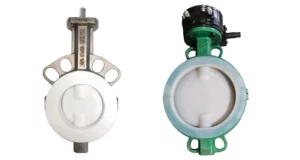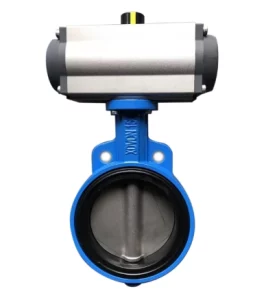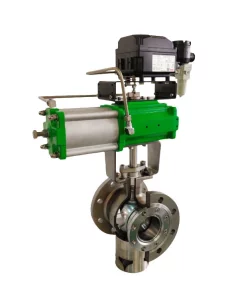Wafer Style Butterfly Valve Installation: Common Challenges & Solutions
Overcoming Initial Installation Hurdles
Site Preparation and Assessment
Evaluating Pipeline Conditions
Pipeline conditions have to be assessed for maintenance and care of wafer style butterfly valve. Before installing the Wafer Style Butterfly Valve, examine the pipeline for any structural damage or corrosion that may interfere with the valve’s function. Also, the pipe supplied in the valve size should match the diameter of the valve to avoid misalignment and leakage issues.
Ensuring Proper Alignment
The wafer style butterfly valve must be properly aligned for its proper functioning. If not fitted properly, the pressure may be uneven, causing damage to the valve line or the pipeline. The valve should be focused on where it should be placed on the pipeline using alignment tools. Align tools to check if valve is centered well over pipeline.
Selecting Appropriate Tools and Equipment
Identifying Necessary Tools for Installation
The right tools are the key to successfully executing the installation. Some of the basic tools like the above wrenches, screwdrivers, and alignment devices are also needed. In addition, specific tools like torque wrenches might be needed to ensure the valve is fastened, but not over-tightened.
Equipment Compatibility Considerations
Compatibility of all equipment with wafer style butterfly valve during installation means confirming that any actuators or control systems are compatible with the valve design and operating points. This involves ensuring the compatibility of any actuators or control systems with the design and functional needs of the valve.
Addressing Mechanical Challenges
Managing Torque Requirements
Calculating Torque for Optimal Performance
So for making the wafer style butterfly valve run, the importance of accurate torque calculation is a priority. Determine torque specifications such as type of fluid, pressure levels, and valve size, type and design. This aids in choosing an actuator that can generate a sufficient amount of force without destroying itself and valves.
Adjusting Torque Levels During Installation
At the time of installation, it is often required to modify torque levels to meet particular operating conditions. Torque wrench is perfect to set everything tight, but not too tight, which allows you to adjust as the pressure changes.
Ensuring Seal Integrity
Types of Seals and Their Applications
Wafer style butterfly valves use various seals according to the requirements of the application. BUNA-N and EPDM elastomers are very good sealing materials for different media types. Choose seals according to the compatible fluid for controlling.
Techniques for Achieving a Tight Seal
For example, a tight seal is achieved when the disc properly sits against the seat in the valve body. This may be achieved by ensuring an even pressure during installation and if required, using the right types of lubricant to increase the sealing efficiency and capabilities.
Navigating Operational Issues
Handling Pressure Variations
Impact of Pressure Changes on Valve Performance
Pressure variations can significantly impact the performance of a wafer-style butterfly valve. Sudden pressure increases may cause leaks or even structural failure if not managed properly. It’s important to monitor pressure levels continuously.
Strategies to Mitigate Pressure Fluctuations
To mitigate pressure fluctuations, consider installing pressure relief devices or surge tanks in conjunction with the valve system. These components help absorb excess pressure and protect both the valve and pipeline from damage.
Controlling Flow Rates Efficiently
Methods to Maintain Desired Flow Rates
Valve Position Control — Desired flow rates are maintained by controlling the position of the valve. Automated systems control the opening of the valve based on real-time measurements of the flow, therefore, ensure the supply of fluids at the specified rates.
Adjustments for Variable Flow Conditions
When flow conditions change too frequently such cases need a flexible control strategy. This may include such things as utilizing high-speed actuators or feedback loops for dynamic response to changing conditions.
The implementation of these methods allows for wafer-style butterfly valves to function in a wide range of applications including water treatment plants and chemical processing facilities. With advanced planning to tackle the most frequent issues, you can boost the system’s reliability and prolong the valve operations even more. This useful and versatile accessory provides mental comfort and eases common struggles leading to improved system performance and valve longevity, if you pick them in advance.
Maintenance and Long-Term Reliability
Routine Inspection Protocols
Key Areas to Monitor Regularly
Regular checks are important in keeping wafer-style butterfly valves in ideal working condition. Monitoring these critical areas which include the valve body, disc, seals, and actuators, is therefore imperative. Check these parts for wear, corrosion, or other damage that could affect the operation of the valve. Ensure valves are not stuck open or closed to minimize downtime.
Signs of Wear and Tear
Some of the common signs of wear and tear are leakage on the valve seat operation, difficulty in operation, high friction, and corrosion of metal parts. If these issues are detected at an early stage, there will be no risk of serious problems and expensive repairs later on.
Troubleshooting Common Problems
Identifying Causes of Valve Failure
Improper installation, material fatigue, or incompatible fluids can all lead to valve failure. Root cause analysis means going through the operational history and even physically inspecting the valve parts.
Steps to Rectify Operational Issues
If there are operational issues – be the first to isolate the issue in the organization to avoid further damage from a chain reaction. If any parts of the valves are damaged or worn out, replace them with suitable alternatives. Incorrect actuators should be re-calibrated so that sufficient torque is supplied for valve operations. These steps are defined below to help you re-establish a functional environment while preventing another failure from occurring.
Exploring Miwival’s Advanced Solutions
Innovative Features of Miwival Wafer Style Butterfly Valves
Miwival is known for its innovative technology to provide advanced solutions for wafer-style butterfly valves to optimize performance and reliability. These valves utilize resilient seated features to achieve optimal sealing with BUNA-N and EPDM elastomer materials. The one-body construction retains its structural integrity even during relatively high pressure environment.
Complementary Products: Segmented Ball Valve and More
Apart from wafer-style butterfly valves, Miwival also has other related products such as segmented ball valves. These products are designed for accurate flow control and they excel in applications that demand tight shutoff. With these solutions, you can provide better operational efficiency in different industry processes by incorporating them into your system.








